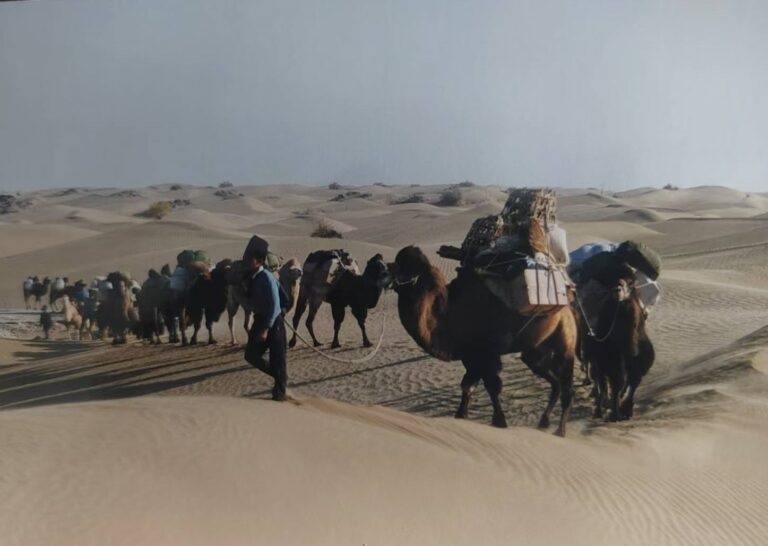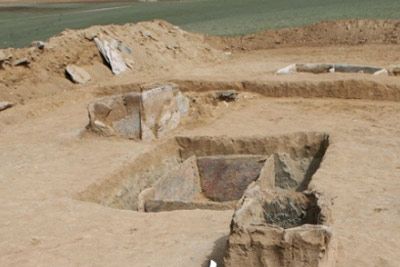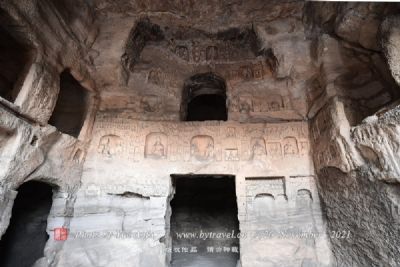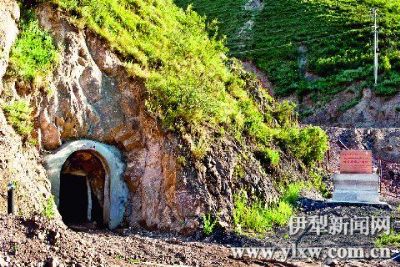A Journey Through Bayingolin Manhan Wangfu: Explore Xinjiang’s Rich Cultural Heritage
An Essential Guide to Visiting Bayingolin Manhan Wangfu
In This Guide
- An Essential Guide to Visiting Bayingolin Manhan Wangfu
- The Rich History of Bayingolin Manhan Wangfu
- Main Highlights: What to See at Bayingolin Manhan Wangfu
- Planning Your Visit: A Practical Guide
- Tickets, Hours, and Booking
- How to Get There
- Local Cuisine and Accommodation
- Frequently Asked Questions
- Final Thoughts on Your Trip
Nestled in the heart of the Xinjiang Uygur Autonomous Region, the Bayingolin Manhan Wangfu (满汗王府) stands as a majestic testament to the rich cultural tapestry of Mongolia and its historical significance. This architectural marvel, which dates back to 1919, was originally constructed as the residence of the 12th Khan of the Tüürkhüts, Mánchúkzab, who played a pivotal role in the region’s history. The palace, a harmonious blend of Chinese and Russian architectural styles, offers an intriguing glimpse into the past, capturing the essence of a unique era marked by resilience and cultural exchange.
Visitors to Manhan Wangfu will discover not only a beautifully preserved structure but also a vibrant museum that recounts the epic tale of the Tüürkhüts’ journey back to their homeland after years of displacement. The museum’s exhibitions delve into the poignant narrative of the “Eastward Return,” highlighting the trials and tribulations faced by the Mongolian people as they navigated the complexities of identity and belonging amidst political turbulence.
As you wander through the grand halls and intricately designed rooms, you’ll be enveloped in the stories of the past—each corner whispering tales of courage, tradition, and the enduring spirit of the Mongolian people. Beyond its historical significance, Manhan Wangfu serves as a cultural hub, hosting interactive activities such as traditional music and dance performances, making it an ideal destination for those eager to experience the rich heritage of this fascinating region firsthand.
Whether you’re an avid history buff, a culture enthusiast, or a curious traveler, a visit to Bayingolin Manhan Wangfu promises to be an unforgettable journey into the heart of Mongolia’s storied past and vibrant present.
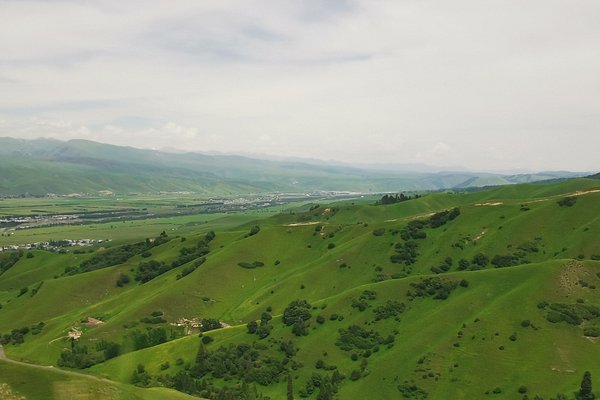
Bayingolin Manhan Wangfu.
The Rich History of Bayingolin Manhan Wangfu
Bayingolin Manhan Wangfu, also known as the Manhan Royal Mansion, is a significant historical site located in Hejing County, Xinjiang, China. Its rich history is intertwined with the story of the Türihüte Mongolian tribe, particularly focusing on the legendary figure of Wubaqisi.
Constructed in 1919, the mansion served as the residence of the 12th Khan of the Türihüte tribe, Manchukzab. This architectural marvel combines elements of Chinese and Russian styles, showcasing intricate designs that reflect the cultural fusion of the era. Spanning approximately 1,000 square meters, the mansion encompasses a grand main hall and two wings, housing a total of 29 rooms. It was not only a royal residence but also the political, economic, and cultural heart of the Türihüte Mongolian people during its prime.
The history of the Türihüte tribe is one of resilience and perseverance. In the late 17th century, the tribe was forced to migrate westward due to internal conflicts and external pressures, eventually settling in the Volga River region. Despite their distance from their ancestral lands, the Türihüte people maintained a deep connection to their heritage and homeland. The pressures of Russian expansion, including heavy taxation and forced conscription, led the tribe to embark on a monumental journey back to their homeland, known as the “East Return.”
This journey, which began in 1771 under the leadership of Wubaqisi, was fraught with peril. The tribe faced numerous hardships, including harsh weather, starvation, and disease, resulting in the loss of many lives along the way. Ultimately, only about 70,000 of the original 170,000 tribe members returned to their ancestral lands, where they were welcomed by the Qing Dynasty. The Qing government relocated the returning Türihüte people to various regions, including Hejing, where the Manhan Wangfu stands today.
Over the years, the mansion has transformed from a royal abode into a museum that commemorates the East Return and the rich cultural heritage of the Türihüte Mongolians. It is now a key cultural venue, featuring exhibitions that showcase artifacts, historical documents, and art that narrate the epic saga of the tribe’s return to their roots and their contributions to the region’s development.
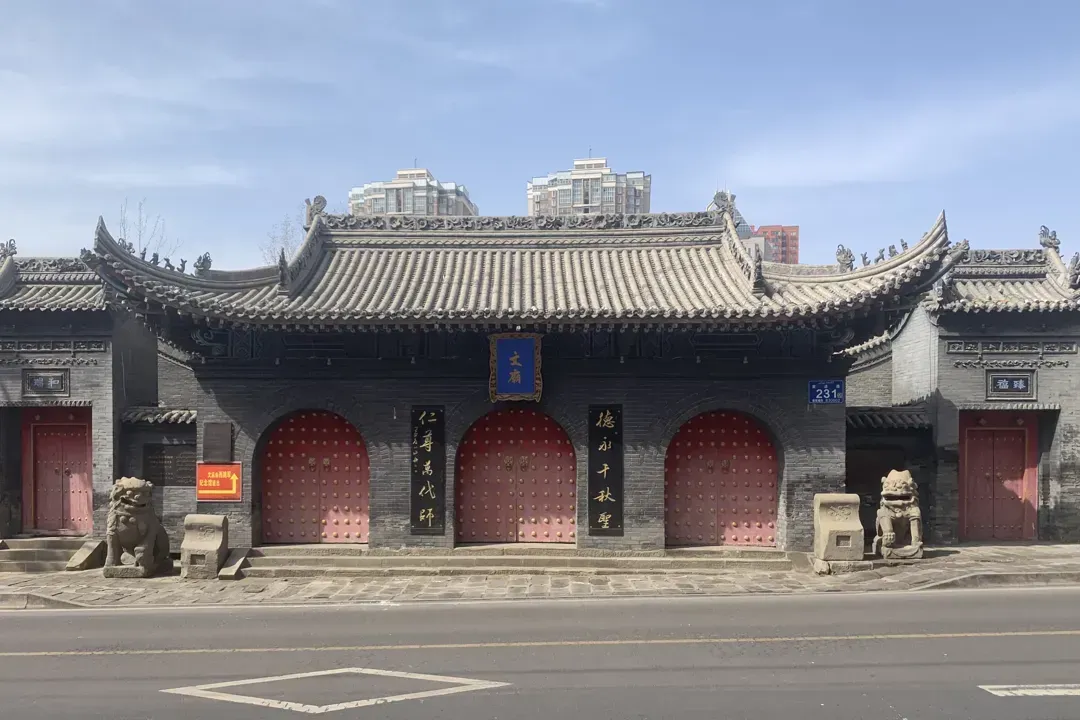
Bayingolin Manhan Wangfu.
In 2013, Manhan Wangfu was designated as a national key cultural relic protection unit, underscoring its importance in Chinese history. Today, visitors to the mansion can explore its grand architecture and delve into the stories of bravery, unity, and cultural identity that are emblematic of the Türihüte Mongolian experience. The site not only serves as a reminder of a bygone era but also as a beacon of national pride and cultural recognition for the Mongolian people in Xinjiang.
Main Highlights: What to See at Bayingolin Manhan Wangfu
Nestled in the heart of the Bayingolin Mongolian Autonomous Prefecture in Xinjiang, the Bayingolin Manhan Wangfu (满汗王府) stands as a testament to a rich cultural heritage and historical significance. This stunning palace, built in 1927, showcases a unique blend of Chinese and Russian architectural styles, making it a remarkable landmark for visitors exploring the region.
Architectural Marvel
The Manhan Wangfu is a sprawling complex that covers an impressive area of 8,510 square meters. Its intricate design features a main hall flanked by two wings, all constructed with traditional timber and stone. The palace is notable for its elegant two-story layout, complete with exquisite decorations that reflect the artistry of the era. Visitors can admire the main hall where the rulers once convened, adorned with altars dedicated to past khans.
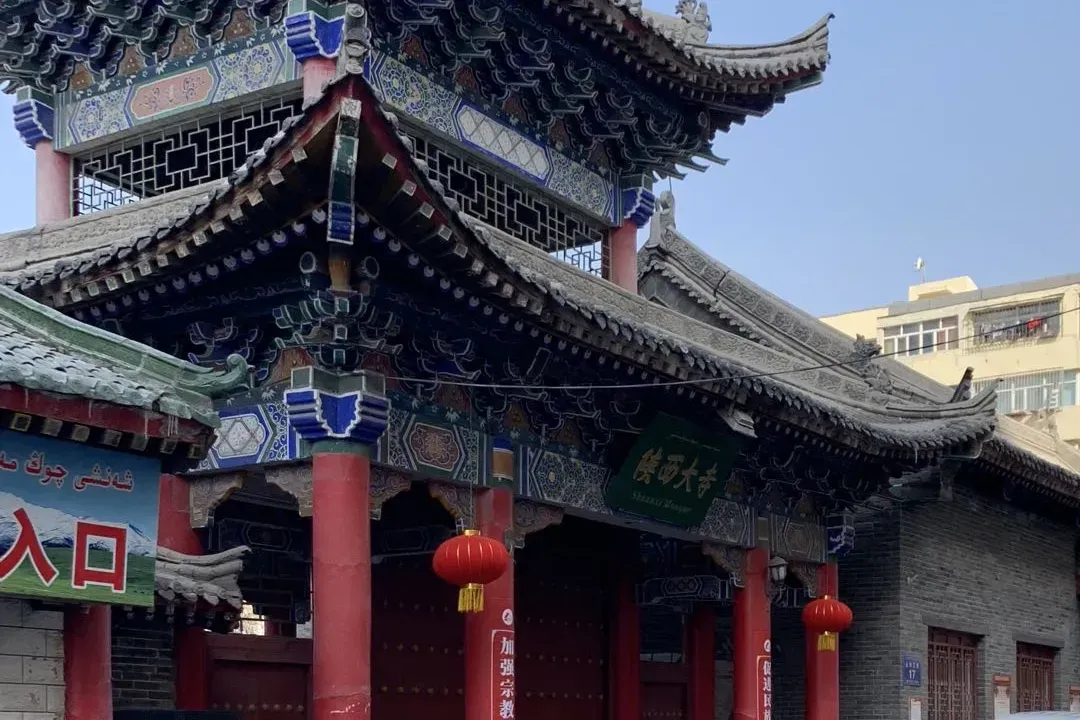
Bayingolin Manhan Wangfu.
Cultural Heritage
As a nationally recognized key cultural relic protection unit, the palace serves as a museum that chronicles the history of the Tuva Mongols, particularly their epic journey known as the “East Return” (东归). This significant event marks the migration of the Tuva people back to their homeland after years of displacement. The museum houses various exhibits that detail their struggles, traditions, and contributions to the region, enriching the visitor’s understanding of Mongolian culture.
Immersive Experiences
Visitors to Manhan Wangfu can partake in interactive activities that celebrate Mongolian culture, such as traditional music and dance performances. These vibrant displays not only entertain but also foster a deeper appreciation for the rich tapestry of local customs. For those seeking a taste of authentic Mongolian cuisine, local delicacies such as hand-pulled lamb, milk tea, and freshly baked naan are available to sample, providing an unforgettable culinary experience.
Natural Surroundings
The palace is ideally located near other attractions that showcase the natural beauty of Xinjiang. The stunning Tianshan Mountains and the nearby Swan Lake are perfect for outdoor enthusiasts looking to explore breathtaking landscapes. These natural sites offer opportunities for hiking, photography, and immersing oneself in the serene environment that surrounds this historical gem.
Accessibility and Visitor Information
Conveniently situated in Hohot County, just 80 kilometers from the city of Korla, the Manhan Wangfu is easily accessible by car or public transport. Before visiting, it’s advisable to check the current opening hours and any potential entry requirements, as these may vary seasonally.
In summary, a visit to Bayingolin Manhan Wangfu is more than just a journey through an architectural masterpiece; it is an invitation to explore the rich history and vibrant culture of the Mongolian people in Xinjiang. Whether you’re a history buff, a culture enthusiast, or simply looking for a unique travel experience, this palace offers something special for every traveler.

Bayingolin Manhan Wangfu.
Planning Your Visit: A Practical Guide
Practical Guide to Visiting Bayingolin Manhan Wangfu
Bayingolin Manhan Wangfu, also known as the Manhan Palace, is a historical gem located in the heart of Hejing County in China’s Xinjiang Uyghur Autonomous Region. This magnificent structure serves as a window into the rich cultural heritage of the Türihut Mongol tribe and the broader Mongolian culture. If you’re planning a visit, here’s everything you need to know for a seamless experience.
Getting There
Location:
Bayingolin Manhan Wangfu is situated at No. 6, Arshate East Road, Hejing County, Bayingolin Mongol Autonomous Prefecture, Xinjiang. It’s approximately 80 kilometers from the city of Korla, making it accessible via car or public transport.
Transportation Options:
– By Car: Renting a car is a convenient option for those who wish to explore the region at their own pace. The scenic drive offers a glimpse into Xinjiang’s stunning landscapes.
– Public Transport: Buses from Korla to Hejing are available, but schedules may vary. It’s advisable to check local listings for the latest timings.

Bayingolin Manhan Wangfu.
Admission
Ticket Information:
While specific pricing can fluctuate, it is recommended to purchase tickets in advance when possible. Be sure to carry an identification card, as it may be required for entry.
Opening Hours
Visiting Hours:
Bayingolin Manhan Wangfu typically opens from 9:00 AM to 5:00 PM. However, it’s best to confirm the current schedule before your visit, as hours may change due to public holidays or special events.
What to See and Do
Explore the Architecture:
Manhan Wangfu boasts a unique architectural style that combines both Chinese and Russian influences, reflecting the cultural exchanges that have taken place over centuries. The palace includes numerous rooms, including the main hall where the Türihut Khan would have conducted affairs.
Cultural Exhibits:
The palace has been transformed into a museum that celebrates the history and culture of the Türihut Mongol people. Visitors can explore exhibitions related to the “Return East” movement, showcasing the resilience of the Mongolian tribes during their migration.
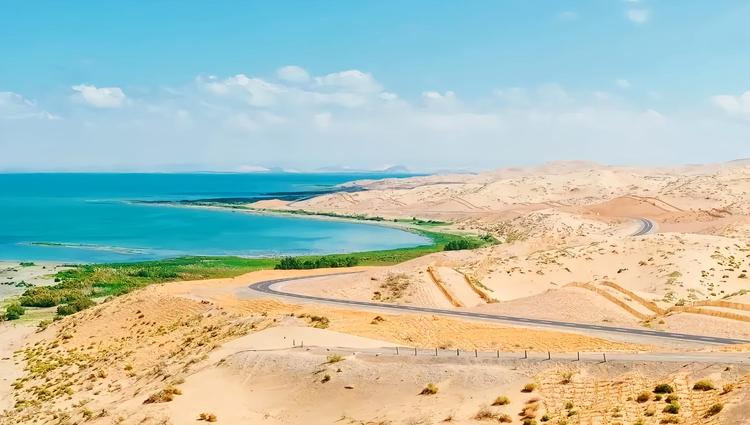
Bayingolin Manhan Wangfu.
Interactive Activities:
Participate in engaging cultural activities such as traditional Mongolian dance performances, horseback riding, and archery demonstrations. These experiences provide deeper insight into the vibrant traditions of the Mongolian people.
Dining Options
Local Cuisine:
While visiting, don’t miss out on sampling authentic Mongolian dishes. Look for places serving:
– Mongolian Barbecue: A popular choice where you can enjoy grilled meats cooked to perfection.
– Hand-Pulled Lamb: A signature dish that reflects the culinary heritage of the Mongolian nomads.
– Milk Tea and Other Dairy Products: Traditional drinks and snacks made from locally sourced ingredients.
Accommodation
Where to Stay:
For an immersive experience, consider staying in accommodations that reflect the local culture. Options include:
– Yurts: Experience traditional Mongolian living in a yurt, often available near the palace or in surrounding areas.
– Ethnic Hotels: Many hotels in Hejing offer a blend of modern comforts and local character. Check for amenities such as Wi-Fi and breakfast options.
Travel Tips
- Plan Ahead: Due to the size of the palace and the range of activities, plan your itinerary carefully to make the most of your visit.
- Check the Weather: Xinjiang’s climate can be extreme. Dress appropriately for the season and bring essentials like sunscreen and water.
- Respect Local Customs: Be mindful of local traditions and customs, especially when interacting with residents or participating in cultural activities.
Safety Precautions
- Stay Informed: Follow any guidelines provided by the site operators and keep an eye on your belongings.
- Emergency Contacts: Familiarize yourself with local emergency numbers and the location of nearby hospitals or clinics.
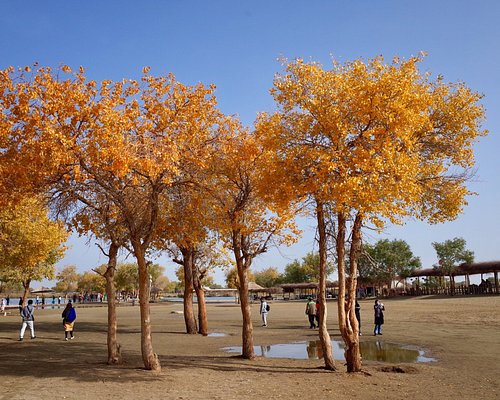
Bayingolin Manhan Wangfu.
Bayingolin Manhan Wangfu is not just a historical site; it’s a journey into the heart of Mongolian culture and history. With this guide, you’re well-equipped to explore this remarkable destination and make lasting memories. Enjoy your adventure!
Tickets, Hours, and Booking
When planning your visit to the Bayingolin Manhan Wangfu (满汗王府), understanding the ticketing process is essential to ensure a smooth experience. This historic site, located in the beautiful Xinjiang Uyghur Autonomous Region, serves as both a cultural treasure and a museum dedicated to the history of the Tuerhute Mongolian tribe.
Ticket Information
-
Ticket Price: Admission to the Bayingolin Manhan Wangfu is generally priced around ¥30 (approximately $4.50 USD). Prices may vary depending on special exhibitions or events, so it’s advisable to check for any updates prior to your visit.
-
Opening Hours: The site typically welcomes visitors from 9:00 AM to 5:00 PM daily. However, it’s recommended to confirm the exact operating hours closer to your visit, as they can change due to seasonal adjustments or special events.
-
Booking: While tickets can often be purchased on-site, pre-booking is highly recommended, especially during peak tourist seasons. This can typically be done through various travel platforms or directly via the museum’s official website.
-
Identification: Visitors are required to present a valid ID when purchasing tickets. Make sure to carry an identification document, as this is mandatory for entry.
-
Accessibility: The Bayingolin Manhan Wangfu is committed to making the site accessible to all visitors. Facilities are available for those with mobility challenges, enhancing the overall experience for everyone.
-
Additional Experiences: Consider participating in on-site activities such as cultural performances, which can enrich your visit. These may require separate tickets, so inquire at the entrance about any available options.
-
Nearby Attractions: After visiting the Bayingolin Manhan Wangfu, explore other nearby attractions such as the Tianshan Tianchi (Heavenly Lake) and the stunning natural landscapes of the region.
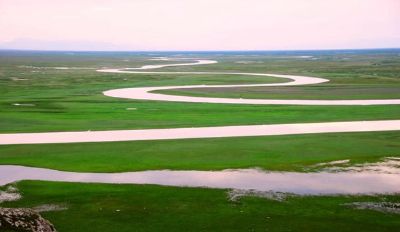
Bayingolin Manhan Wangfu.
By planning ahead and considering these ticketing details, you can ensure a memorable visit to this significant cultural landmark.
How to Get There
Getting to Bayingolin Manhan Wangfu (满汗王府) is an essential part of your journey to explore this historical site, renowned for its unique architecture and rich cultural heritage. Located in the heart of Hejing County, Bayingolin, Xinjiang, the Manhan Wangfu is accessible through various modes of transportation that cater to different preferences and budgets.
By Air
The nearest major airport to Manhan Wangfu is in Korla (库尔勒), approximately 80 kilometers away. Korla Airport (KRL) offers domestic flights from major cities like Urumqi, the capital of Xinjiang. Once you arrive at Korla, you can opt for a taxi or a rented vehicle to reach Hejing County.
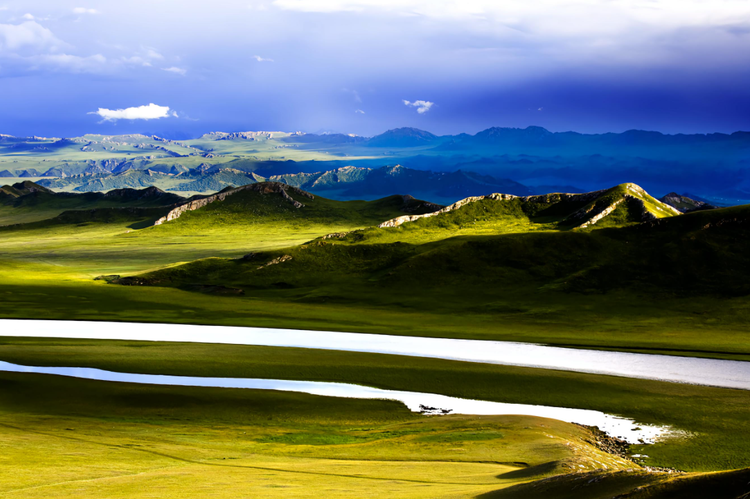
Bayingolin Manhan Wangfu.
By Train
If you prefer traveling by train, Korla Railway Station is your best bet. It is well-connected to several key cities in China, including Urumqi. From the station, you can take a taxi or find local buses that head towards Hejing County. The scenic train ride through Xinjiang’s landscapes can be quite an experience, giving you a glimpse of the region’s natural beauty.
By Bus
Long-distance buses are a common and economical way to travel within Xinjiang. Buses from Urumqi and Korla to Hejing County are frequent. The bus journey typically takes around 2-3 hours, depending on traffic and road conditions. Be sure to check the schedules in advance, as they can vary.
Local Transportation
Once in Hejing County, getting to Manhan Wangfu is straightforward. Local taxis are available and can be hailed from the street or booked through ride-hailing apps popular in China. Alternatively, you may find local buses that stop near the Wangfu, making it an accessible destination for budget travelers.
Driving
For those who prefer the freedom of driving, renting a car is an excellent option. Several rental agencies operate in Korla and Urumqi, allowing you to explore at your own pace. The road conditions around Hejing are generally good, making the drive a pleasant experience. Just ensure you have a map or GPS enabled, as signage may not always be in English.
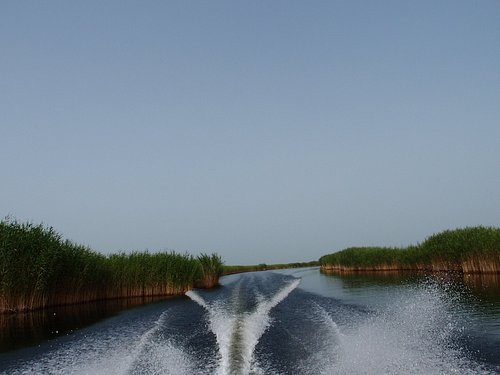
Bayingolin Manhan Wangfu.
Summary
Whether you choose to fly, take a train, or travel by bus, reaching Bayingolin Manhan Wangfu is quite feasible. With local taxis and buses readily available, you can easily navigate your way to this historical gem. Plan your trip according to your preferences, and immerse yourself in the rich history and culture that the Manhan Wangfu offers.
Local Cuisine and Accommodation
When visiting the Bayingolin Manhan Wangfu, also known as the Manhan Palace, travelers have a delightful array of culinary and accommodation options that reflect the rich cultural tapestry of the region.
Culinary Delights
The area surrounding Manhan Wangfu is renowned for its unique Mongolian cuisine, which offers visitors a chance to indulge in authentic local flavors. Among the must-try dishes are:
-
Mongolian Barbecue: A staple of the region, this dish features expertly grilled meats, often lamb or beef, seasoned with local spices that enhance their natural flavors. Enjoying this dish in a traditional setting adds to the experience.
-
Hand-Pulled Lamb: Known as shou zhua rou, this dish is a traditional way of serving lamb. It is prepared by boiling the meat and serving it with a variety of dipping sauces, making it a favorite for gatherings and special occasions.
-
Milk Tea: A beloved beverage in Mongolian culture, this creamy tea is often served with butter and roasted grains, providing a comforting and hearty drink perfect for any time of day.
-
Naan Bread: This local bread, which is baked in clay ovens, complements many meals and is often used to scoop up meats and stews.
-
Sea Buckthorn Juice: For something refreshing, try this local drink made from the tangy sea buckthorn berries, known for their health benefits and vibrant flavor.
Accommodation Options
For those planning an overnight stay, options range from traditional accommodations to modern hotels, allowing visitors to immerse themselves in the local culture while enjoying comfort:
-
Traditional Mongolian Yurts: Experience authentic nomadic hospitality by staying in a yurt, which provides a unique opportunity to connect with the local culture. Many yurts are equipped with modern amenities and offer beautiful views of the surrounding landscapes.
-
Cultural Boutique Hotels: In the nearby towns, there are boutique hotels that incorporate traditional Mongolian elements into their design. These hotels often feature local art and provide an intimate atmosphere, along with friendly service.
-
Business Hotels: For those seeking modern amenities, several business hotels in the region offer comfortable rooms, high-speed internet, and facilities like gyms and conference rooms. These hotels are ideal for travelers who appreciate convenience alongside cultural experiences.
When planning your visit to the Bayingolin Manhan Wangfu, make sure to indulge in the local cuisine and choose accommodations that enhance your experience of this culturally rich area. Whether you opt for traditional or modern lodgings, the hospitality and flavors of the region are sure to make your stay memorable.
Frequently Asked Questions
Frequently Asked Questions about Bayingolin Manhan Wangfu
1. What is Bayingolin Manhan Wangfu?
Bayingolin Manhan Wangfu, also known as the Manhan Palace, is a historic site located in Hejing County, Xinjiang. This palace, built in 1927, served as the residence of the 12th Khan of the Tu’erhu Te Mongol tribe and is a significant cultural and architectural landmark, showcasing the unique blend of Central Asian and Russian architectural styles.
2. How can I get to Bayingolin Manhan Wangfu?
The palace is situated approximately 80 kilometers from the city of Korla in the Bayingolin Mongol Autonomous Prefecture. Visitors can reach the site by car or public transport from nearby cities. It’s advisable to check local transportation schedules for more convenience.
3. What are the opening hours?
While the exact opening hours may vary, it is recommended to check directly with the site or local tourism information sources before your visit, as they can change seasonally or due to special events.
4. Is there an entrance fee?
Yes, there is an entrance fee to visit Bayingolin Manhan Wangfu. The price may vary, so it is best to verify the current rates when planning your visit. Discounts may be available for students or groups.
5. What can I expect to see at the palace?
Visitors to Bayingolin Manhan Wangfu can explore the beautifully preserved palace, which includes various exhibition halls dedicated to the history and culture of the Tu’erhu Te Mongol people. The palace showcases traditional architecture, artifacts, and offers cultural performances related to Mongolian heritage.
6. Are there any guided tours available?
Yes, guided tours are often available. These tours provide deeper insights into the history and significance of the palace and its cultural relevance. It’s advisable to book a tour in advance, especially during peak tourist seasons.
7. What other attractions are nearby?
Bayingolin Manhan Wangfu is located near several other attractions, including the Tianshan Tianchi (Heavenly Lake) and the Swan Lake. Visitors can also explore the local Mongolian culture through nearby cultural villages and markets.
8. Is it possible to try local cuisine nearby?
Absolutely! The area around Bayingolin Manhan Wangfu offers several dining options where visitors can experience authentic Mongolian cuisine. Dishes such as mutton barbecue, milk tea, and various dairy products are highly recommended to get a taste of the local culture.
Final Thoughts on Your Trip
Visiting Bayingolin Manhan Wangfu offers more than just a glimpse into the architectural splendor of the early 20th century; it is an invitation to explore the rich tapestry of Mongolian culture and history. This historic site stands as a testament to the resilience and spirit of the Tuoketuo tribe, whose epic journey back to their homeland reflects a profound narrative of identity and belonging.
As you wander through the intricately designed halls and rooms, you’ll not only appreciate the unique blend of Central Asian and Russian architectural styles but also the stories they tell—stories of courage, unity, and the enduring quest for cultural heritage. Engage with interactive exhibits, savor traditional Mongolian cuisine, and participate in cultural activities that bring these narratives to life.
Whether you’re a history buff, a culture enthusiast, or simply a curious traveler, Bayingolin Manhan Wangfu promises a memorable experience. This destination, steeped in meaning and beauty, invites you to reflect on the past while celebrating the present. Let the echoes of the past inspire your journey, as you embrace the spirit of the East Return and carry these stories with you long after you leave.
